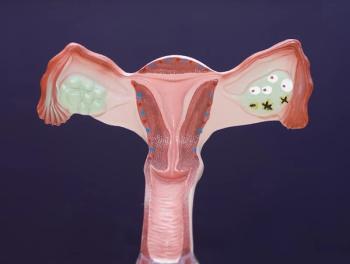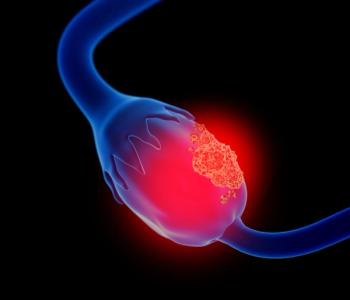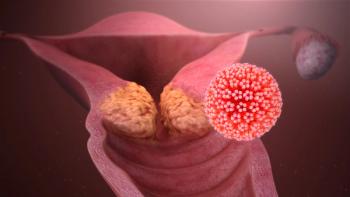
Oncology NEWS International
- Oncology NEWS International Vol 5 No 6
- Volume 5
- Issue 6
DFMO Shows Potential in the Prevention of Cervical Cancer
NEW ORLEANS--In a phase I trial from M.D. Anderson Cancer Center, the chemopreventive agent difluorometh-ylornithine (DFMO) produced significant regression of cervical intraepithelial neoplasia (CIN) grade 3, Michele Follen Mitchell, MD, reported at the Society of Gynecologic Oncologists meeting.
NEW ORLEANS--In a phase I trial from M.D. Anderson Cancer Center,the chemopreventive agent difluorometh-ylornithine (DFMO) producedsignificant regression of cervical intraepithelial neoplasia (CIN)grade 3, Michele Follen Mitchell, MD, reported at the Societyof Gynecologic Oncologists meeting.
DFMO is a suicide inhibitor of ornithine decarboxylase, a stepalong the polyamine synthesis chain to carcinogenesis, and isbelieved to be a strong antiprolif-erative agent. It has beenused in the treatment of colon cancer.
The study included 30 patients treated for 30 days with one offour doses of DFMO in elixir form: 1.0, 0.5, 0.25, and 0.06 g/m²/day.
After treatment, the patients underwent biopsies for polyaminesynthesis markers followed by loop electrosurgical excision ofthe cervix for complete his-topathologic study. Blood was drawnfor red cell polyamine synthesis markers and serum ornithine andarginine levels. One patient was excluded from analysis, leaving29 for evaluation.
Despite the short duration of treatment, five patients experienceda complete response, and 10 patients had a 50% response, showingregression of the lesion from CIN 3 to CIN 1 or 2. The DNA indexconfirmed the significance of the changes from pretreatment topost-treatment biopsies, Dr. Mitchell said.
While the classic polyamine markers were modulated, these changeswere not significant, probably because of the small sample size,Dr. Mitchell said.
Tissue polyamine modulation, as measured by the spermidine/spermineratio, on the other hand, was significantly changed at a DFMOdose of 1.0 g. Serum polyamine modulation, as measured by plasmaarginine, was also significantly modulated at the 1.0 g dose.This suggests that parts of the polysynthesis chain were blocked,possibly impeding car-cinogenesis, she said.
The provides optimism for the potential use of DFMO in the preventionof cervical cancer and will be further examined in a phase IIstudy, she said.
Articles in this issue
over 29 years ago
Psychosocial Oncology May Benefit From System Reformover 29 years ago
Managed Care Reform: Wait Until Next Year for House, Senateover 29 years ago
Converting Quality of Life Data to 'Q' Scores Allows Comparisonsover 29 years ago
Shorter Paclitaxel Infusions Add to Neuropathy Riskover 29 years ago
Breast Cancer Mortality Rates Downover 29 years ago
Pain Scale Resembling Thermometer May Be Easier to Use Than VASover 29 years ago
Immediate Hormone Therapy Improves Prostate Cancer Survivalover 29 years ago
New Test for Prostate Cancer Riskover 29 years ago
Topotecan: Significant Activity in Ovarian CancerNewsletter
Stay up to date on recent advances in the multidisciplinary approach to cancer.
















































































